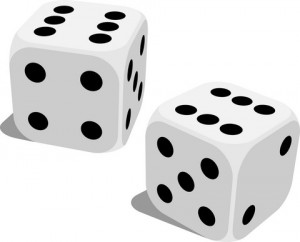
If I asked a group of innovation practitioners, “What are some ways to make the odds of achieving successful innovation more favorable?” I suspect I would get answers like:
- Look for some quick wins that are not too far from existing products, markets and capabilities.
- Be sure you’ve identified a legitimate unmet customer need.
- Have a thoughtful and disciplined process for driving innovation.
- Assure high level support and insulate young initiatives from the naysayers.
- Avoid applying traditional business metrics like ROI, sales volume and gross margins too quickly.
- Create an innovation-friendly culture.
- And so on…
These are all good advice and sound innovation practices. They are at the core of what innovation leaders are striving to do: make innovation work better. However, I’d like to refocus the conversation onto something that I’m convinced is more powerful than any of these strategies (based on hard data, but I’ll get to that in a moment).
Innovation requires not only coming up with great new ideas, but figuring out how to explore and test those ideas; figuring how who the customers are and what they want and are willing to pay for; figuring out a business model that delivers value to both the customer and the company; figuring out how to scale and so forth. What if rather than focusing on ways to optimize each of those tasks (as important as they are), we focused on optimizing the figuring out part itself? What if we paid more attention to the fundamental metacognitive skills that make someone a good “figure-outer?” Would that shift the odds of success? The answer is an emphatic, “Yes!” and the effect on innovation outcomes is massive.
In this and subsequent posts, I’m going to be talking about newly published peer-reviewed research into the mindset of successful innovators. How to identify it, how to measure it, how to develop it and its dramatic impact on value creation. My goal is to break this substantial body of work down into digestible and applicable chunks, but if you’d like to work ahead, it’s covered in three articles that have been published in series in the International Journal of Innovation Science.
Valuable Novelty: A Proposed General Theory of Innovation and Innovativeness
Evaluating Mindset as a Means of Measuring Personal Innovativeness
Personal Innovativeness as a Predictor of Entrepreneurial Value Creation
Or, for a briefer less technical explanation, you can download a white paper that summarizes all three articles at InnovatorMindset.com/research
These articles walk through 1) a comprehensive theory of innovation that transcends any particular application or context, 2) the creation and validation of a rigorous psychometric instrument for measuring someone’s innovativeness and providing feedback on how to enhance that capability, and 3) a study of hundreds of entrepreneurs that revealed that someone’s level of innovativeness is a powerful predictor of innovation success and value creation. I can only begin to cover all that in this post, so let me give you some key findings:
The innovativeness of entrepreneurs was measured along an Innovativeness Index, (0-100 scale). The business outcomes of the ventures of those who scored highest were then compared to those who scored lowest. The high scorers averaged 34 times as much profit, 70 times as much revenue and employed 10 times as many people. (No, those are not typos.) Those who scored highest were also dramatically more likely to be one of the rare “home runs,” the high end outliers that investors prize. A typical early stage investment portfolio has about a 10% home run hit rate based on industry averages. Measuring founders’ innovativeness identified an elite group with a home run rate of as high as 60%. That’s shifting the odds!
Entrepreneurs were chosen for this study partly because it’s much easier to keep score than in a more corporate setting, where it can be much trickier measuring exactly who’s creating value and how much (and who’s along the for the ride). However, the implications are wide ranging and can easily be applied to innovation in many contexts. The data revealed a pattern of value creation that appears to hold regardless of the type of value being measured. I’ll cover that in more detail in my next post.
For now, imagine how useful it would be to be able to identify those who are most predisposed to creating new value, when you are hiring, creating a project team or choosing among candidates for investment. Think how powerful it would be to be able to develop those attributes in anyone who wants to become more innovative. That won’t guarantee innovation success, but it will dramatically shift the probabilities.
More to come…

Leave A Comment